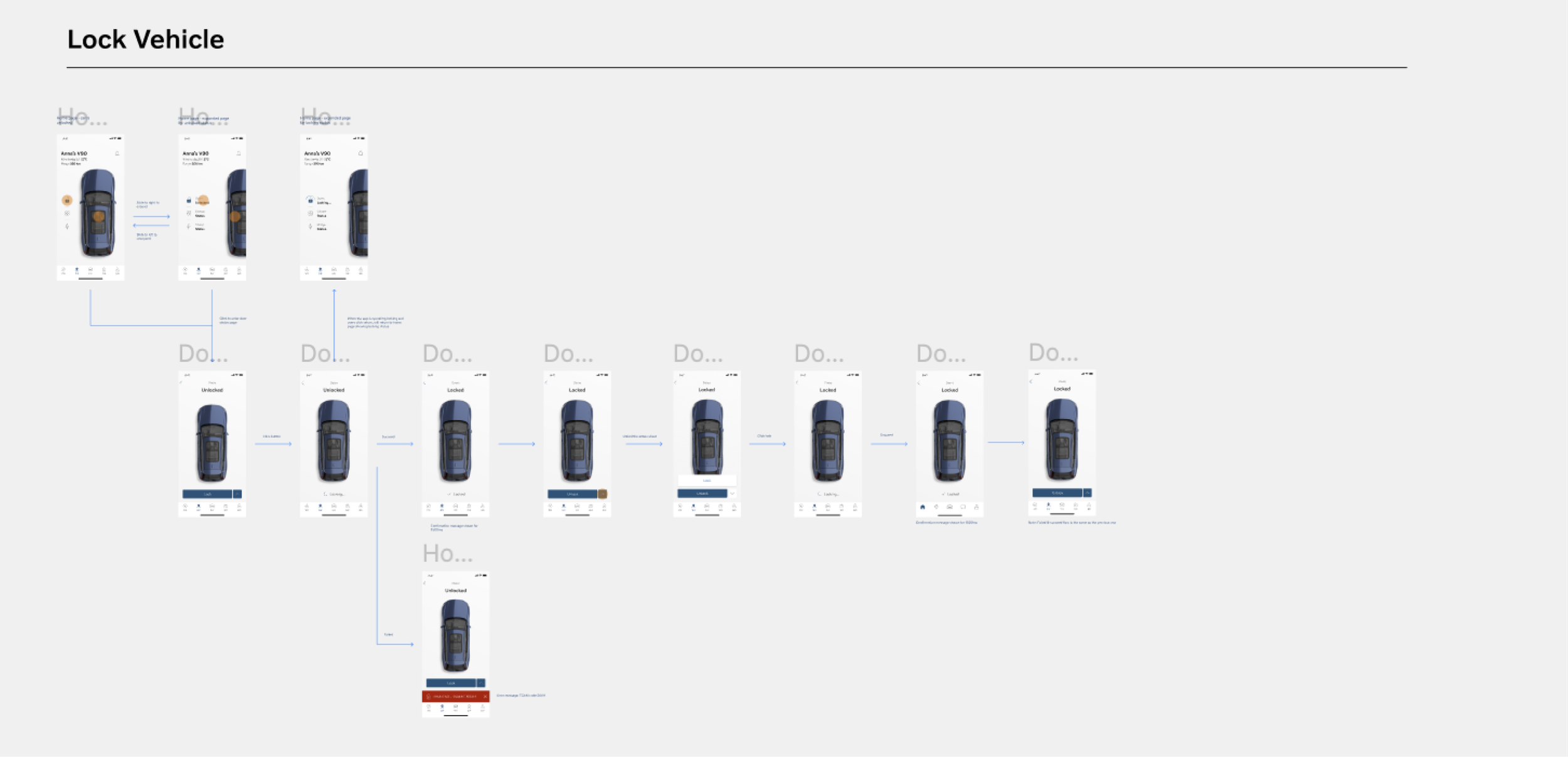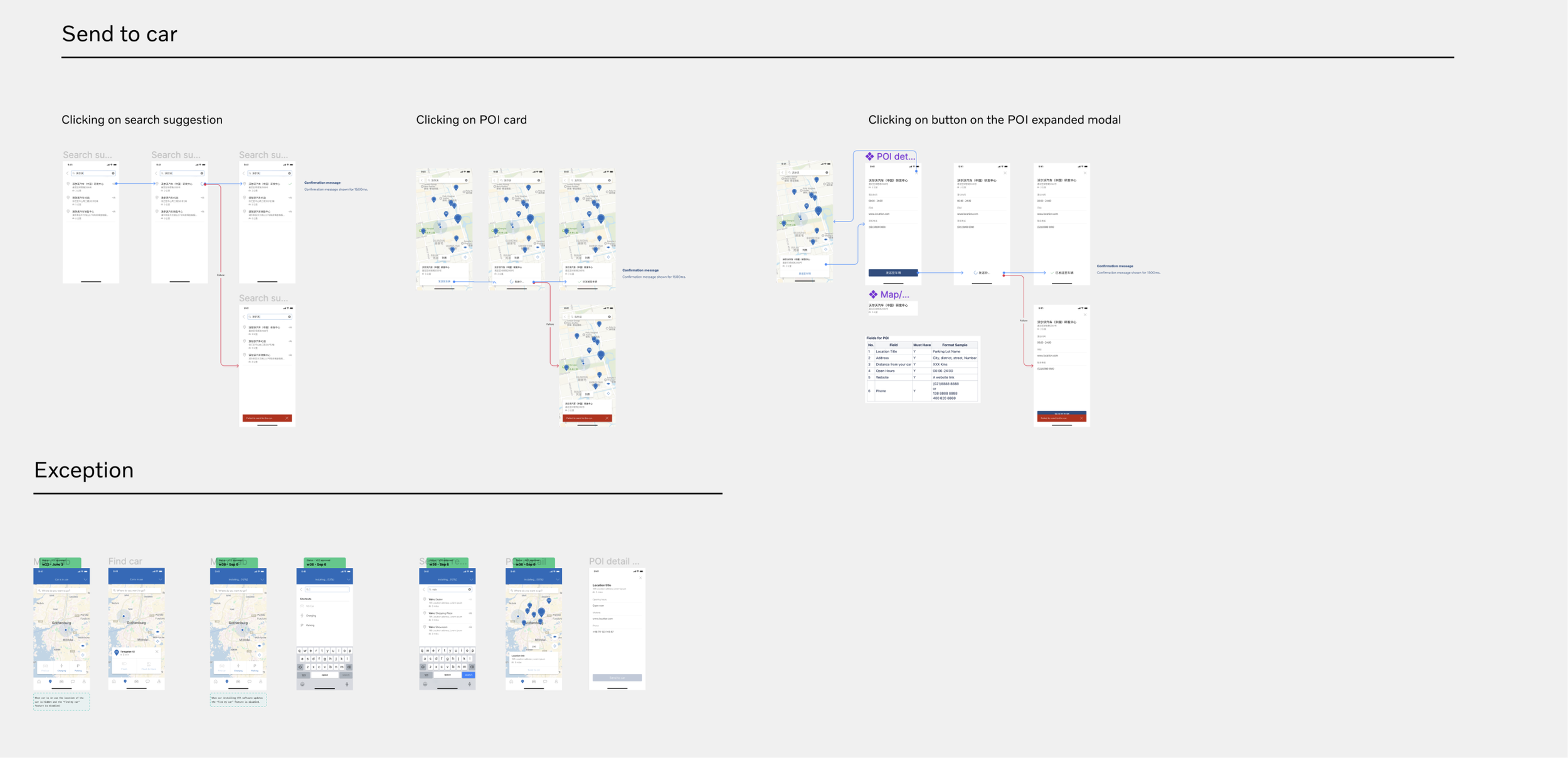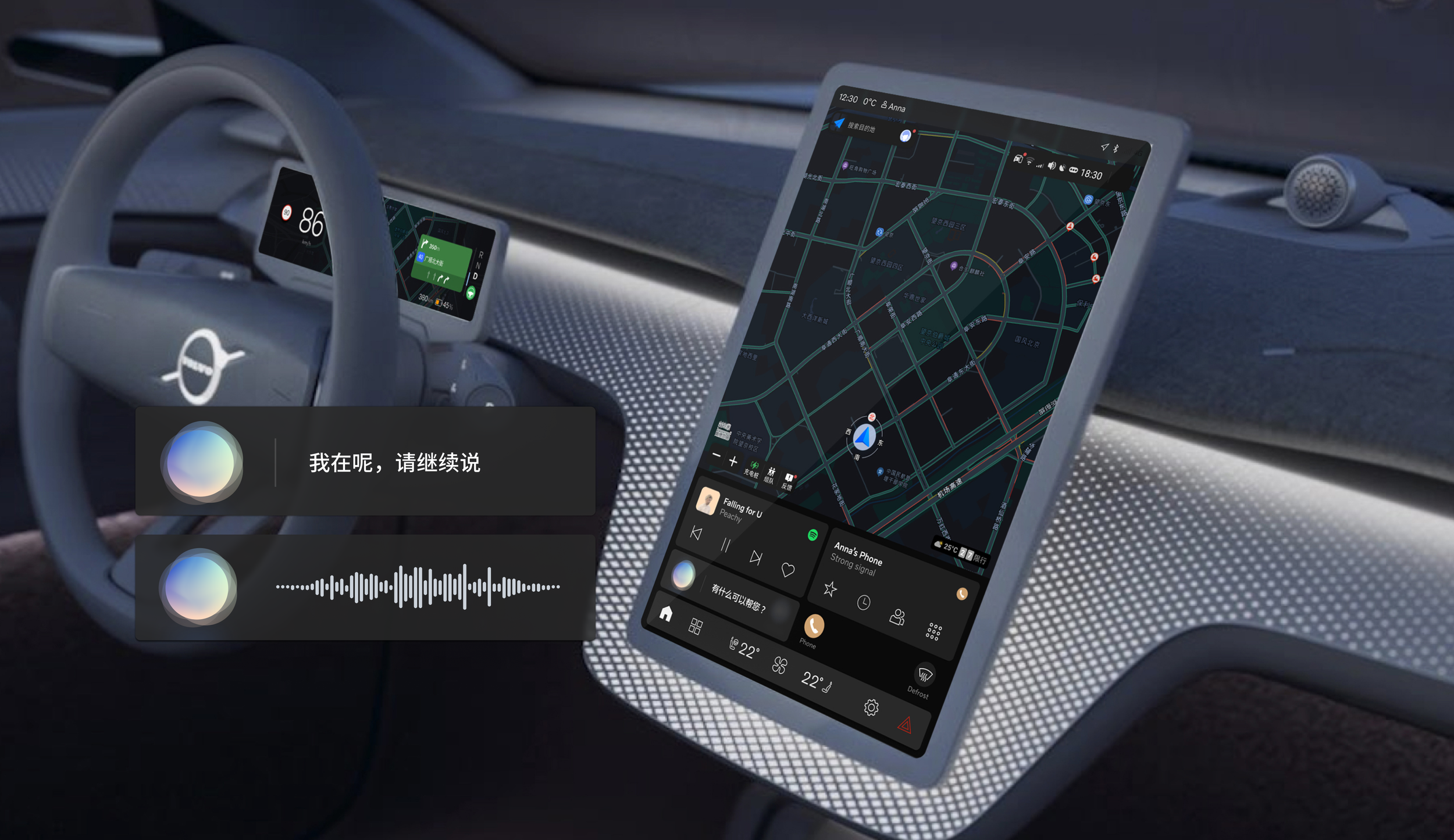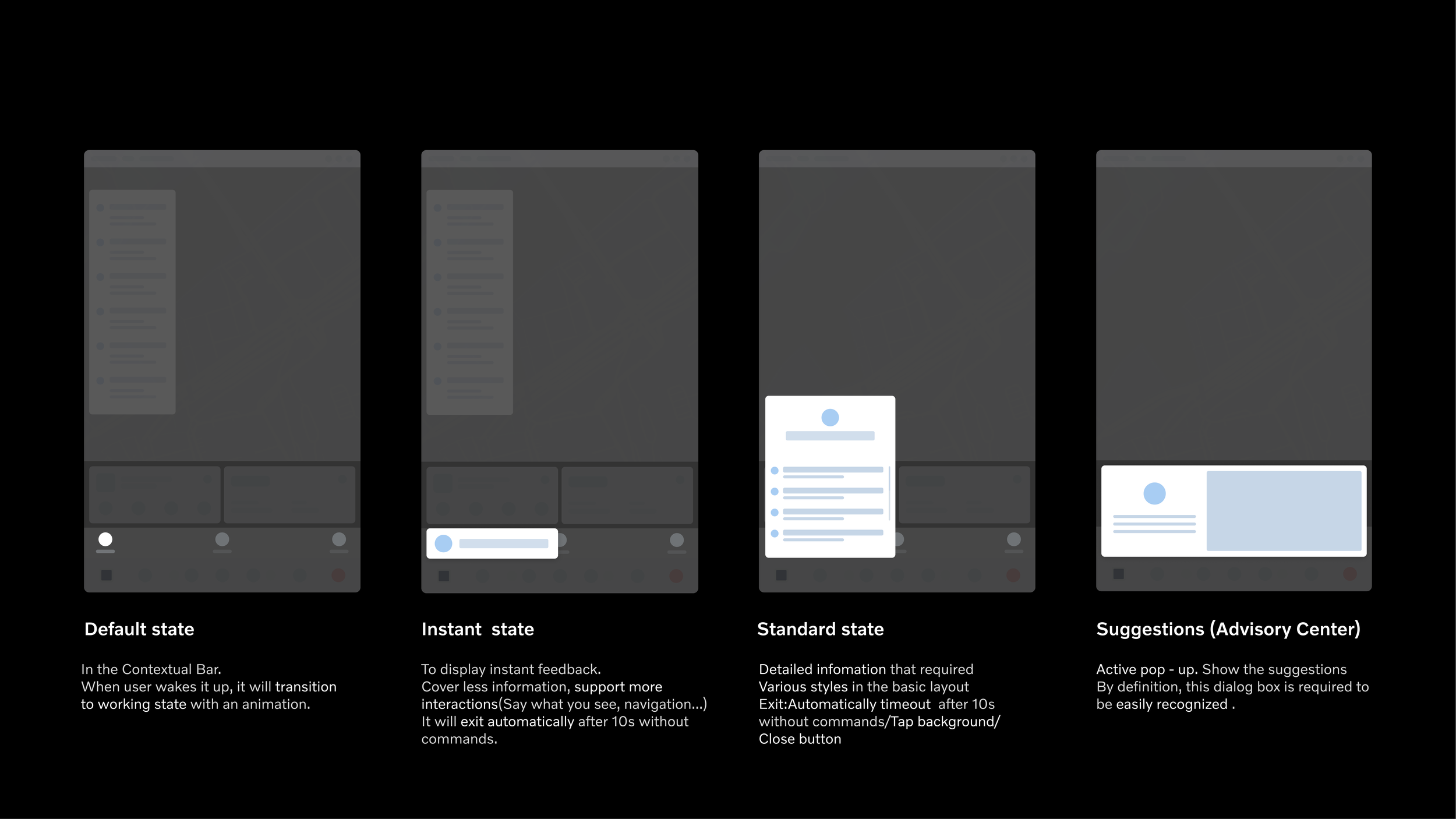Redesign the Volvo Cars App for a special car model
EX30 is Volvo’s new electric car model, the goal of this project is to design a mobile app for EX30 to integrate the new features into the existing structure and IA of the current Volvo Cars App while enhancing the user experience. However, this comes with the challenge of alignment between different teams, including both the global and China mobile team, as well as the design system team.
Duration: May 2022 - Dec 2022
Role: Lead product designer
In this project, I led the product design, and closely collaborate with product owners and developers through an agile approach. Through the project, I also provided feedback and guidance to a junior UX designer, ran design critiques, and drove alignment between the global mobile team, China mobile team, and the China development team.
Delivery & Build
App architecture
Snapshots of UX spec and delivery
China voice assistant framework
The development of an in-house voice assistant in China is a unique challenge that requires a different approach compared to using Google as the voice assistant provider in the global market. As the lead designer of the project, I worked alongside another junior UX designer to design the voice assistant UX Framework. On the one hand, it has to integrate into the existing new system design, on the other hand, it requires a deep understanding of Chinese culture and consumer behavior, as well as the ability to integrate local features and services into the design.
Duration: May 2022 - Dec 2022
Role: Lead UX designer
Chinese users have higher expectations for voice assistants than users in other parts of the world. They expect more features and emotional connections than Google Assistant provides. As the voice assistant represents the Volvo brand, it is crucial to the user's perception of the company. This means that the project is strategically important for the design team, as it will directly impact how users view the brand.
Designing the UX framework is a complex process that involves multiple rounds of discussion within our own team and with the global team. It also involves executive reviews and collaboration with the development team to ensure feasibility. Throughout the process, we prioritize usability and user-centered design to ensure that the final product meets the needs and expectations of Chinese users.












